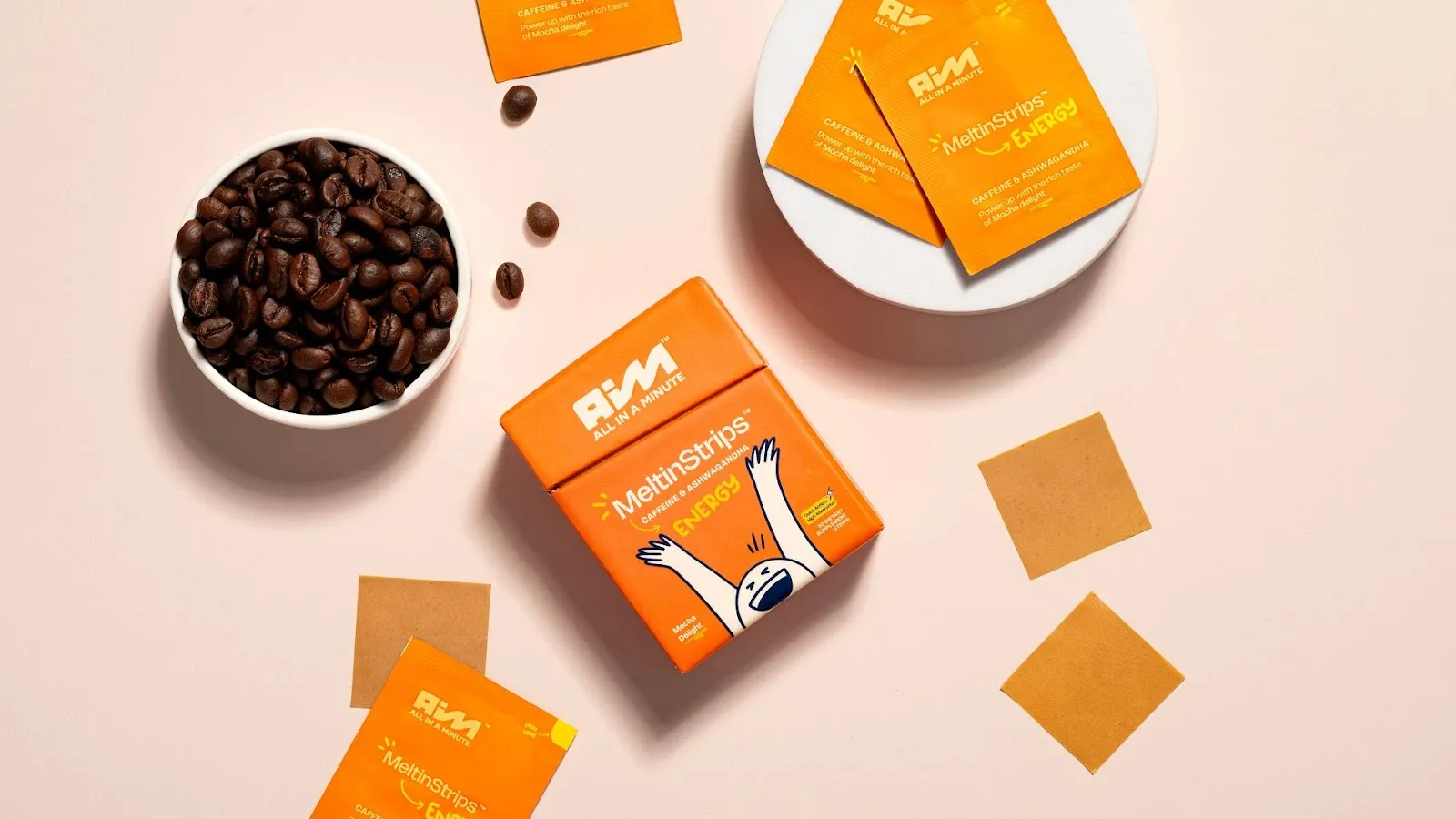.svg)
.svg)
.svg)
.svg)
.svg)
.svg)
.svg)
.svg)
Book a call and get unlimited revisions for your project!
.webp)
.svg)

As a founder, you didn't start a business just to be another face in the crowd. You launched it because you saw a gap, a problem to solve, or a better way of doing things. That initial fire—that unique perspective—is the raw material for your brand's positioning. But in the daily chaos of building a company, it's easy to lose sight of that spark and start reacting to what everyone else is doing.
Resist that urge. Your brand's position isn't a marketing tactic; it's a declaration of your original vision. For you, the founder, defining your position is about reclaiming that initial "aha!" moment and translating it into a clear, defensible spot in the market. It’s the strategic act of telling the world not just what you do, but why you're the only one who can do it your way.
Imagine walking down a crowded supermarket aisle. Dozens of snack bars are screaming for your attention. Some boast of low calories, others of high protein, and a few have packaging that just looks delicious. The one you pick isn't just a random choice; it's a decision guided by a powerful, often invisible, force.
This force is brand positioning, and it's the art and science of carving out a specific, memorable space in your customer's mind. In today's crowded markets, especially in fast-moving retail sectors, mastering your brand's position is not just an advantage—it's essential for survival.
Your brand's position is its North Star. It guides every decision you make, from the ingredients you source for your food product to the tone of voice you use on social media. It ensures that every touchpoint a customer has with your brand tells the same cohesive story. When you have a clear position, your packaging, your website, and your customer service all work together in harmony.
This consistency is crucial for building trust and making your brand feel reliable and authentic. A well-defined position helps you understand how to align design with your brand identity, ensuring your visuals communicate the right message.

Think of the last time you recommended a product to a friend. You likely didn't just name the brand; you described what it stands for. "You should try this one; it's the best for sensitive skin," or "This brand is a bit pricier, but their quality is unmatched." Those descriptions are the result of successful positioning. It simplifies the choice for consumers, cutting through the noise and making your brand the obvious solution for a specific need. By occupying a clear space, you create mental shortcuts that lead customers directly to you, time and time again.
Before you can decide where you want to stand, you need to understand the landscape. Effective positioning begins with a deep look at the market you're in and the competitors you're up against. Without this context, you risk creating a brand that is either irrelevant to customers or too similar to everyone else.
Start by analyzing the market as a whole. What are the major trends shaping your industry, whether it's plant-based alternatives in the food and beverage sector or sustainable materials in fashion? Who are your customers, and what do they truly care about? Your goal is to identify unmet needs or frustrations that your brand can solve.
For example, in the wellness space, perhaps customers are tired of complicated supplement routines and are looking for a simpler, all-in-one solution. That's a potential opening.
Once you understand the broader market, zoom in on your direct and indirect competitors. Don't just look at what they sell; analyze how they position themselves. A simple but effective tool for this is a positioning map. You can plot your competitors on a two-axis grid based on key attributes that matter to customers in your category.
For instance, a beauty brand might use axes like "Natural Ingredients vs. Scientific Formulation" and "Affordable vs. Luxury." This visual map will quickly show you where the market is crowded and, more importantly, where the open spaces are. Finding these gaps is the first step in differentiating your business in a saturated market.
Being different is easy. Being different in a way that your target audience finds valuable is the real challenge. This is where your USP (Unique Selling Proposition) brand positioning comes into play. It's the unique promise you make to your customers that no one else can match. There are several proven brand positioning strategies you can use to set yourself apart.
This strategy involves positioning your brand as either the most affordable option or the most premium. A brand like Dollar Shave Club entered a market dominated by established giants by offering a simple, low-cost subscription model.
On the other end, a luxury watchmaker positions itself on exclusivity and high price, signaling superior craftsmanship and status. While effective, competing on price can be a race to the bottom, so it must be supported by a business model that can sustain it.
Here, you focus on offering superior product quality, exceptional durability, or an outstanding customer experience. Zappos, the online shoe retailer, built its entire brand on a promise of world-class customer service, including free returns and 24/7 support.
In the food industry, a brand might differentiate itself by using only organic, locally sourced ingredients, justifying a higher price point with a promise of superior quality and freshness.
Instead of trying to be everything to everyone, this strategy involves focusing on a very specific segment of the market. This is one of the most powerful ways of differentiating your business in a saturated market. For example, Fenty Beauty disrupted the cosmetics industry by offering an inclusive range of 40 foundation shades, catering to a diverse audience that had long been ignored by mainstream brands.
Similarly, a pet food company could specialize in formulas for dogs with specific allergies. At Confetti, our specialization is our strength; we focus exclusively on the retail sector, allowing us to offer deep expertise that generalist agencies can't.
Feeling stuck on how to find your unique angle? Sometimes an outside perspective is all you need. Our team at Confetti specializes in helping retail brands in food, fashion, and beauty uncover their unique story. Let's book a call to discuss your vision.

Defining your brand's position doesn't have to be an abstract exercise. You can follow a clear, practical framework to build a statement that will guide your brand's future.
Finally, remember that brand positioning is not a one-time task. Markets evolve, consumer preferences change, and new competitors emerge. The position that worked for you five years ago might not be as effective today. It's critical to continuously monitor how your brand is perceived. You can do this by listening to customer feedback, tracking conversations on social media, conducting surveys, and analyzing sales data.
If you notice a disconnect between your intended position and how customers actually see you, it may be time for an adjustment. Sometimes this means a small tweak in your messaging; other times, it may require a more significant change. Knowing how to refresh your brand identity without losing your core audience is a delicate but necessary skill for long-term success.
Navigating this process alone can be daunting, especially in the fast-paced retail world. This is where a specialized partner makes all the difference. At Confetti, we live and breathe retail. Our entire agency is built to serve brands in food & beverage, fashion, beauty, and wellness. We act as a single, unified team for your most critical needs—from foundational branding and eye-catching packaging to stunning AI photography.
This integrated approach means no more juggling multiple agencies or inconsistent freelancers. You get a cohesive strategy and a reliable partner dedicated to reducing risk and driving real results. It's why experienced marketers from established companies trust us to help them stay ahead and why emerging startups partner with us to make their mark.
In a world overflowing with choices, blending in is the same as being invisible. Your brand deserves to be seen, remembered, and chosen. By thoughtfully defining your brand's position, you give it a clear voice, a distinct personality, and a compelling reason to exist in the hearts and minds of your customers.
From analyzing the market to crafting your unique story and evolving with the times, mastering your position is the key to not just surviving, but thriving.
Ready to stop blending in and start standing out? At Confetti, we partner with ambitious retail brands in food, fashion, and wellness to build identities that captivate and convert. If you're looking for expert support in India, the USA, or the UAE, we're here to help you craft your unique story.
Book a call with us today, and let's define a position that sets you up for success.
What is brand positioning and why is it important?
Brand positioning is the process of creating a distinct and valued place in the minds of your target customers. It's important because it guides your marketing strategy, helps you stand out from competitors, and builds customer loyalty by making your brand the clear choice for a specific need.
How do you differentiate in a competitive market?
You can differentiate your business by focusing on a unique aspect that your customers value. This can be done through several methods, including:
What are common mistakes in brand positioning?
Common mistakes include trying to appeal to everyone, having a message that is unclear or inconsistent, and failing to deliver on the promises your brand makes. Another error is not researching competitors, which can lead to a position that isn't unique.
How long does it take to establish brand positioning?
Establishing strong brand positioning doesn't happen overnight; it typically takes 6-12 months of consistent messaging and brand experiences to start seeing a solid perception form in the minds of consumers. The timeline can vary based on market competition and marketing efforts.
What is a USP in brand positioning?
A USP, or Unique Selling Proposition, is the one thing that makes your business better than the competition. In USP brand positioning, this unique benefit is the core of your messaging and the primary reason customers should choose you over others.
Lorem ipsum dolor sit amet, consectetur adipiscing elit, sed do eiusmod tempor incididunt ut labore et dolore magna aliqua. Ut enim ad minim veniam, quis nostrud exercitation ullamco laboris nisi ut aliquip ex ea commodo consequat. Duis aute irure dolor in reprehenderit in voluptate velit esse cillum dolore eu fugiat nulla pariatur.
Block quote
Ordered list
Unordered list
Bold text
Emphasis
Superscript
Subscript


.svg)